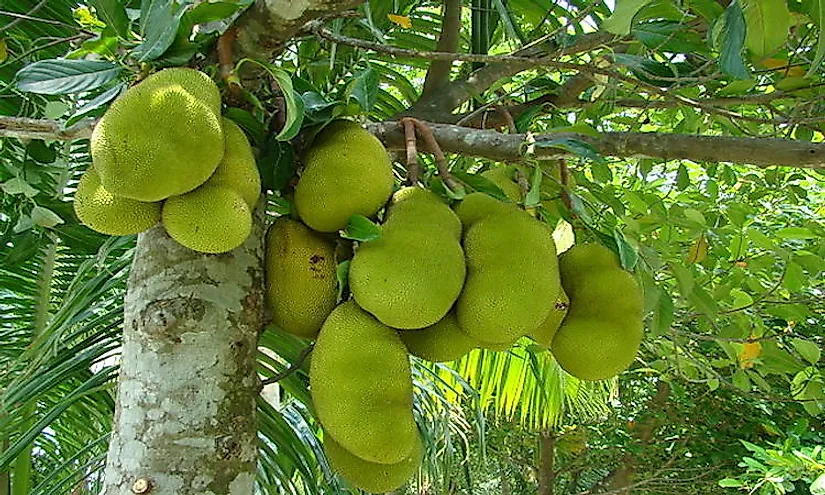World Leaders In Jackfruit Production

What Is A Jackfruit?
Jackfruit is hailed as a miracle crop that can be used to save millions of people from starvation and hunger. Jackfruit is the largest known tree-born fruit in the world with one fruit weighing up to 100 pounds and having hundreds of seeds. The fruit is native to South and Southeast Asia but believed to have originated from the rainforest of the Western Ghats. Jackfruit is a national fruit in Bangladesh where it is also considered the second most important fruit after mangoes. A single jackfruit can feed a whole family because of its size and the different ways people have learned to prepare it.
Uses And Benefits Of Jackfruit
Depending on where one is, jackfruit has several uses because of the many advantages that can be derived from the fruit. In Southeast Asia, the fruit is an everyday food. It can be eaten as a fruit when it is ripe. In many homes in Bangladesh and parts of Southeast Asia, it can also be served in several ways including as curry, juice, cream, and cakes. The flesh of the jackfruit is a good source of dietary fiber. The ripe jackfruit can be used to make a variety of dishes including cakes and custards. The seeds of a ripe jackfruit are edible because of the sweet milky taste. The seeds can either be boiled or roasted to improve their taste. Unripe jackfruit is used in Indian, Sri Lankan, Cambodian, and Thai cuisine. The young fruits are cooked with coconut milk to improve the taste of food. Jackfruit contains vital vitamins and nutrients such as carbohydrates, protein, vitamin B6 and C that are essential for the body. The leaves are important feed for animals. The bark of the tree can be used as a dye while the sticky latex produced by the tree can be used as glue. The wood from the tree can be used in furniture work and to produce musical instruments.
Jackfruit Cultivation
Jackfruit is well suited to the tropical lowlands and is widely cultivated throughout the tropical regions of the world. Jackfruit tree is sensitive to frost and extreme drought. It grows at an altitude of 4,000 feet above the sea level. Propagation is through seeds with germination taking about three weeks. The seeds are first planted in the nursery before transplanting takes place once the tree develops three to four leaves. The trees are planted at a spacing of 30 by 30 feet with 69 trees fitting within an acre. Fertilizer can be applied to stimulate growth, especially in young trees and also to improve yields. Jackfruit is a disease resistant tree, but the tree can wilt and the shoots dry off if proper care is not taken. However, wild animals such as civet cats can attack and destroy the tree.
Jackfruit Production And Top Producing Countries
Different varieties of jackfruit trees produce different yields per tree. NS 1 variety produces 10-20 fruits per tree every season while an average production of all varieties is 15 fruits per tree every season. India is the largest jackfruit producer recording a production of 1.4 million tons while Bangladesh which considers jackfruit a national fruit is the second highest producer recording a production of 926 tons. Other top producers of jackfruit include Thailand, Indonesia, and Nepal. According to the UN Food and Agricultural Organization, 75% of the fruit produced in India goes to waste since the fruit can easily go bad if not consumed or preserved within few days.
World Leaders In Jackfruit Production
| Rank | Country | Production (1000 tonnes) |
|---|---|---|
| 1 | India | 1436 |
| 2 | Bangladesh | 926 |
| 3 | Thailand | 392 |
| 4 | Indonesia | 340 |
| 5 | Nepal | 18.97 |











